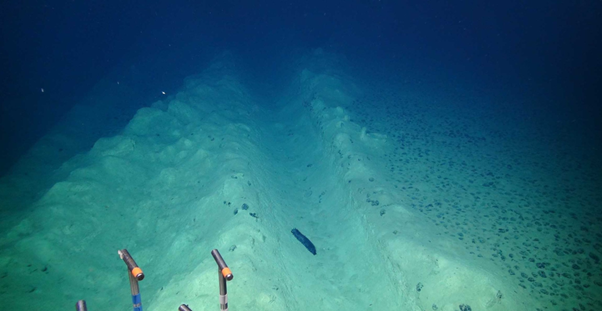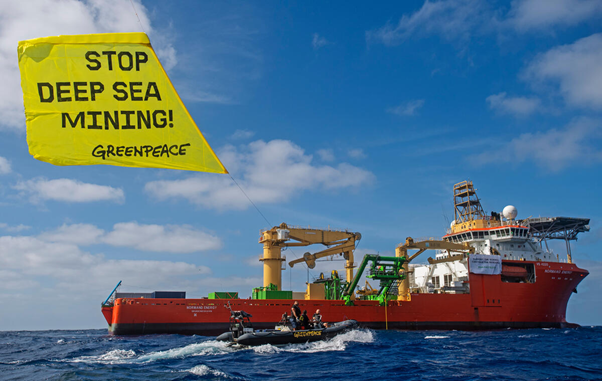Canadian deep-sea mining firm, The Metals Company (TMC), has formally initiated a process under the U.S. Department of Commerce to apply for exploration licenses and commercial recovery permits under existing U.S. legislation, the Deep Seabed Hard Mineral Resources Act of 1980 (DSHMRA).
The Company said that following extensive legal diligence on DSHMRA, regulations and other applicable environmental protection legislation, they strongly believes that the U.S. seabed mining code offers the greatest probability of securing a permit for commercial recovery of deep-sea mineral resources in a timely manner.
DSHMRA was established as an interim legal framework for the recovery of seabed mineral resources prior to the creation of an international regulatory framework under the United Nations Convention on the Law of the Sea (UNCLOS).
Photo: ©SMD. Deep-sea mining vehicles
Treaty ratification
The announcement from TMC came while the latest meeting of the 36-member council of the International Seabed Authority (ISA), the UN affiliated regulator responsible for overseeing deep-sea mining in international waters, was meeting. ISA delegates have been working to finalise the mining code — a set of rules, regulations and procedures that would allow deep-sea mining to proceed on the high seas — which they’d aimed to complete in 2025, based on a loose deadline set in 2023. However, Mongabay reported, observers say the mining code remains far from finished, with unresolved issues including how to distribute royalty payments and how to protect the environment.
The ISA, established in 1994 under the UNCLOS treaty ratified by 169 member states plus the EU, has jurisdiction over mining in international waters and decides how extraction should proceed. However, the US has signed but never ratified the treaty.
If the company is successful, TMC could be the first to obtain a commercial exploitation license in international waters. Its preferred target is polymetallic nodules —rocks rich in commercially valuable metals like copper, nickel, manganese and cobalt — found in the Clarion-Clipperton Zone of the Pacific Ocean.
Photo: ©National Oceanography Centre and The Trustees of the Natural History Museum, with acknowledgement to the SMARTEX project
Long-term impacts of deep-sea mining
At the same time, a brand-new study led by the UK’s National Oceanography Centre (NOC) has revealed the long-term impacts and the first signs of biological recovery in seabed mining tracks, 44 years after deep-sea trials in the Pacific Ocean.
The findings, published in the scientific journal Nature, provides evidence to the global deep-sea mining debate. A team of scientists visited a previously mined site in the Clarion Clipperton Zone to investigate if recovery is possible and what impact remains 44 years after the machines left.
The international team of researchers found that mining has clearly caused long-term changes to the sediments, but the effects on the animals living at these depths are more variable.
Photo: ©Marten van Dijl / Greenpeace
“An insult to multilateralism”
Leticia Carvalho, the secretary general of the ISA expressed “deep concern” over TMC’s announcement. At a meeting of delegates, Carvalho said: “All exploration and exploitation activities in the Area must be carried out under the Authority’s control.
“Any unilateral action would constitute a violation of international law and directly undermine the fundamental principles of multilateralism, the peaceful use of the oceans and the collective governance framework” set up under the treaty, the Guardian reported.
Louisa Casson, a campaigner for Greenpeace International, said: “This announcement is a slap in the face to international cooperation,” adding that it was “an insult to multilateralism”.


